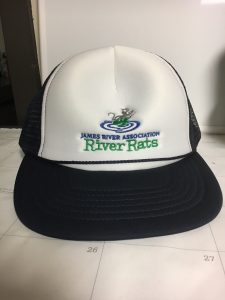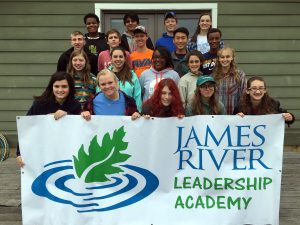To be completely honest, as excited as I was for the River Rat training session, it was a pretty hard sell to get up for a 5-hour presentation on Saturday morning. Since I had arrived the latest of our SSIR group, I grabbed a seat in the back row, coincidentally sitting next to one of Todd’s former students, Roy. We conversed and he told me that he lives in Charlottesville as a GIS specialist for the Virginia Natural Heritage Program. I realized that he was so enthusiastic about our public lands that he had come all this way to attend the session. Compared to an hour drive, rolling out of bed and walking 10 minutes didn’t seem so bad. Afterward I began to pay especially close attention to the presentation.
The presentation itself provided a really great overview of the current status of the river. The James is making large strides in improving its water quality and habitat restoration: chemical runoff has been reduced and the number of many local species have increased. They went through the statistics of the river such as 60% in nitrogen reduction and 59% in Striped Bass. However, the main issue of run-off from factories and industries remain in the James. Thus, they emphasized the importance of natural buffer zone restoration, while further discouraging hydrological infrastructure such as dams. This relates back to our class discussion where 100 feet of buffer is ideal for biodiversity and filtration towards a body of water. It is good that we are working towards that goal; not only does it promote natural growth, but it does so without disturbing the environment. Similarly, the River Rat’s dissuasion from hydrological infrastructure ties back to Florsheim’s article in which it disrupts habitats and prevents it from naturally fluctuating.
What impressed me the most was their outreach towards the local community. They were strongly pushing to connect the public to the river. As a result, they offered an array of programs and opportunities for people to get involved such as teacher trainings, ecology school programs, and several river expeditions. According to Don Forsyth, this approach would gradually progress the state of the river through awareness and, ultimately, action. I couldn’t agree more with this method, as including people in their local issues eventually fosters a responsibility towards them. A great example of this is when the River Rats split us into small groups and assigned each of us a local issue scenario. This made the presentation much more engaging because I felt that I had a direct hand in remedying the problems of our river. If we apply this approach to our local communities, we will all eventually be as passionate in protecting public lands as Roy and thus, the James River will catch up to the McKenzie in no time.



